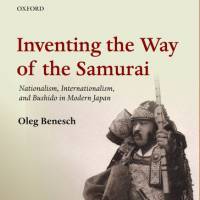Oleg Benesch's "Inventing the way of the Samurai" is a seminal, scrupulously researched work that teems with ideas. Its content is profoundly relevant to current political developments in Japan, as questions about the Constitution and the nation's identity come to the fore.
Inventing the Way of the Samurai, by Oleg Benesch
294 pages
Oxford University Press, Nonfiction.
Benesch begins by debunking the misconception that modern theories of the Bushido samurai code began with Nitobe Inazo's "Bushido: The Soul of Japan," published in English in 1900. In fact, the word "Bushido" first surfaced in Japanese essays during the late 1880s and early 1890s. Intellectuals as distinguished as Yukichi Fukuzawa (whose face adorns the ¥10,000 note) offered his musings on Bushido before Nitobe ever put pen to paper.
Bushido reached its first apogee with the upsurge in national confidence following Japan's success in the Sino-Japanese (1894-5) and Russo-Japanese (1904-5) wars. Benesch charts its relative decline in intellectual discourse during the Taisho Era (1912-26) before its fateful linking with military education from the 1930s onward.
In the '80s, Bushido enthusiasts pushed for a return to the less-militaristic version of the code and, with hardly a pause for breath, it was back in vogue, eulogized by sports coaches and business leaders.
Benesch sees the vagueness of Bushido — the way it can switch from a fixation with the Emperor to a devotion for one's group and superior — as the key to its survival. His book is an essential guide to this crucial aspect of Japan's intellectual history.



















With your current subscription plan you can comment on stories. However, before writing your first comment, please create a display name in the Profile section of your subscriber account page.